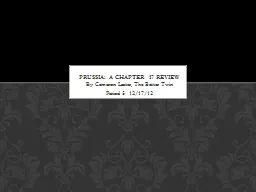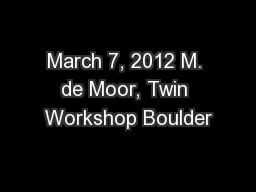PPT-By: Cameron Lester, The Better Twin
Author : pamella-moone | Published Date : 2016-06-24
Period 5 121712 Prussia A Chapter 17 review Prussia is a country located between German and Russia and above Austria and Poland Prussia is a country ruled by the
Presentation Embed Code
Download Presentation
Download Presentation The PPT/PDF document "By: Cameron Lester, The Better Twin" is the property of its rightful owner. Permission is granted to download and print the materials on this website for personal, non-commercial use only, and to display it on your personal computer provided you do not modify the materials and that you retain all copyright notices contained in the materials. By downloading content from our website, you accept the terms of this agreement.
By: Cameron Lester, The Better Twin: Transcript
Download Rules Of Document
"By: Cameron Lester, The Better Twin"The content belongs to its owner. You may download and print it for personal use, without modification, and keep all copyright notices. By downloading, you agree to these terms.
Related Documents














